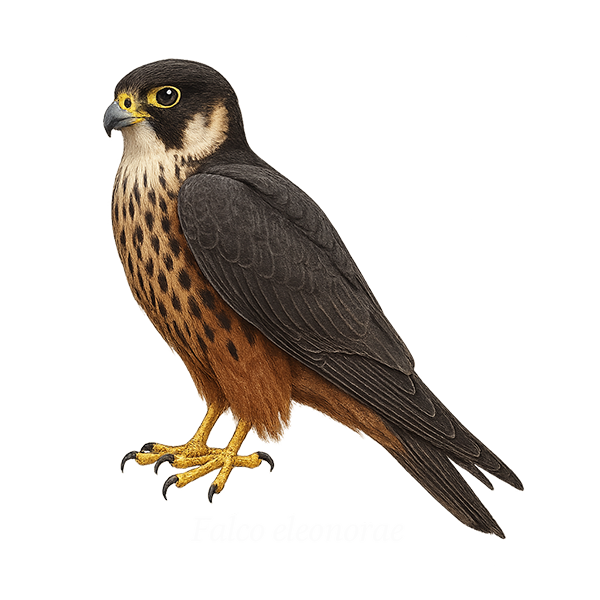Your wildlife photography guide.
Explore the eleonora's falcon in detail, study its behavior, prepare your shots.
Where to observe and photograph the eleonora's falcon in the wild
Learn where and when to spot the eleonora's falcon in the wild, how to identify the species based on distinctive features, and what natural environments it inhabits. The WildlifePhotographer app offers tailored photography tips that reflect the eleonora's falcon’s behavior, helping you capture better wildlife images. Explore the full species profile for key information including description, habitat, active periods, and approach techniques.
Eleonora's Falcon
Scientific name: Falco eleonorae

IUCN Status: Least Concern
Family: FALCONIDAE
Group: Birds
Sensitivity to human approach: Suspicious
Minimum approach distance: 30 m
Courtship display: July to August
Incubation: 27-30 jours
Hatchings: July to September
Habitat:
Cliffs, Mediterranean islands, coastal areas
Activity period :
Primarily active during the day, with peak activity in the morning and late afternoon.
Identification and description:
The Eleonora's Falcon is an elegant and agile bird of prey, renowned for its impressive migrations and unique hunting behavior. It is characterized by its dark plumage and long, pointed wings, which are well-suited for fast and acrobatic flight. This falcon primarily nests on Mediterranean islands, choosing steep cliffs to establish its colonies. It feeds mainly on insects and small birds, which it captures in mid-air. Its breeding strategy is unique among raptors, as it times its nesting period to coincide with the autumn migration of birds, ensuring an abundance of prey to feed its young.
Recommended lens:
400 mm – adjust based on distance, desired framing (portrait or habitat), and approach conditions.
Photography tips:
To photograph the Eleonora's Falcon, choose times of the day when the light is soft, such as early morning or late afternoon. Use a telephoto lens of at least 400mm to capture precise details without disturbing the bird. Be patient and discreet, maintaining a distance of at least 30 m to avoid disrupting its natural behavior. Observe the cliffs where they nest, as this is where you will have the best chance of seeing them in action.
The WildlifePhotographer App is coming soon!
Be the first to explore the best nature spots, track rutting seasons, log your observations, and observe more wildlife.
Already 1 430 wildlife lovers subscribed worldwide

